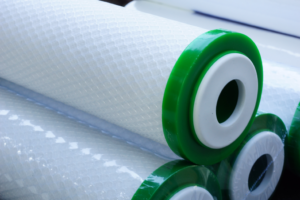
These systems make use of several stages of filtration, removing more and more contaminants at each stage. Curious as to the specifics of a reverse osmosis system’s operation? Then read below. This article contains all the information you will need to know.
The Filtration Stages
Reverse osmosis systems can contain anywhere from 3 to 6 stages of filtration. For the purpose of this article, we’re only going to cover three stages. They include the following.
Pre-Filter
The pre-filter on a reverse osmosis system is responsible for filtering out dust, dirt, and other large sediment. This filter prepares water for the most intensive filter—the membrane filter.
RO Membrane Stage
The reverse osmosis membrane is where most of the magic happens in a reverse osmosis system. This membrane not only filters out minerals and chemicals, but bacteria as well, removing the vast majority of contaminants that exist within a water supply.
Some of the contaminants removed during this stage include arsenic, lead, sulfur, and iron, to name just a few. In all, it removes approximately 95% of a water supply’s total contaminants.
Post-filter
The post-filter is like the clean-up crew, so to speak. This filter catches all of the contaminants that the reverse osmosis membrane missed, ensuring that the water which runs through it is as pure as technologically possible.
Reverse Osmosis System Components
There are a number of different components contained within a reverse osmosis system. Each of these components will be discussed below.
Filters
As we discussed above, reverse osmosis systems can contain a range of filters. While the most basic of systems contain only a pre-filter, a membrane filter, and a post-filter, more intricate systems can contain up to 6 different filters. These filters remove a wide variety of contaminants, including bacteria, minerals, and chemicals.
Feed Valve
The feed valve is the connection between the reverse osmosis system and its corresponding water supply. This is the valve that allows water to flow into the reverse osmosis system.
Housing
The housing is the shell that contains all of the other components in a reverse osmosis system. It serves no purpose other than to keep various components in place.
Storage Tank
The storage tank collects and stores all of the water that has been filtered by the reverse osmosis system. This tank is what allows for continuous use of the system.
Shutoff Valve
The shutoff valve is located next to the system’s storage tank. An automatic valve, its job is to stop waterflow as a means of preventing the tank from overflowing.
Faucet
Every reverse osmosis system is equipped with a dedicated faucet. This faucet is used to deliver purified water to the rest of the home.
Drain Valve
Not all of the water that runs through a reverse osmosis system gets filtered. The unfiltered water does not end up in the storage tank. Instead, it’s drained out of the system’s drain valve.
Install a Reverse Osmosis System in Burr Ridge, Illinois
Now that you know how a reverse osmosis system works, you might be interested in installing one in your home. If so, and if you’re looking for a reverse osmosis system in Burr Ridge, Illinois, DuPage Water Conditioning has you covered.
We’ve installed reverse osmosis systems in thousands of homes throughout Burr Ridge and its surrounding areas. Regardless of your water softening needs, our team can accommodate you.
Contact us today for a free quote!
